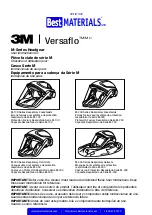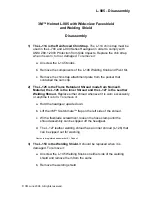
Operating Manual
ARS31(Pro)-UMB
G. Lufft Mess- und Regeltechnik GmbH, Fellbach, Germany
7
4 Installation
The road sensor is installed in the middle of the carriageway. If the road has two lanes, the
sensor is installed in the left hand lane.
4.1 Preparation
The sensor ARS31Pro-UMB/ARS31-UMB requires a hole of diameter Dm > 16 cm and
depth Dp = 6 cm. A slit of width W = 2 cm and depth Dp = 5 cm is cut into the road for the
cable.
For ARS31Pro-UMB
the external sensor requires an additional hole of diameter Dm > 9
cm and depth Dp = 5 cm.
Attention! When installing on bridges, make sure that the insulation layer is not
damaged (it is not always possible to maintain a depth of 6 cm in these cases).
4.2 Installation
Warning: Do not undo the cable connections under any circumstances
You can only cut the cable at the control panel end.
The cable must be laid in a protective tube in such a way as to ensure that any expansion
of the road covering does not affect the cable. The road sensor cables must not be
subjected to tensile force during installation.
Warning: Damage to the cable sheath or external sensors causes water ingress into
the sensor. Sensors with damaged cables must not be installed and can only be
repaired by Lufft.
Install the road sensor in the hole provided in such a way that it is flush with the road
surface. To do this, place the installation aid - which is already mounted on delivery - on
the road surface. It may be necessary to align the sensor by bending the installation aid.
Under no circumstances must the road sensor project beyond the surface of the
road covering (damage due to snow-clearers).
Fill the cavities with casting resin concrete.
Only use concrete bedding systems whose temperature remains below 80°C on
hardening as otherwise the road sensor will be damaged.
After the casting resin concrete has hardened, remove the installation aid and the green
protective film. Reinstall the fixing screws of the installation aid in the open holes of the
sensor (torque 2 Nm).








































